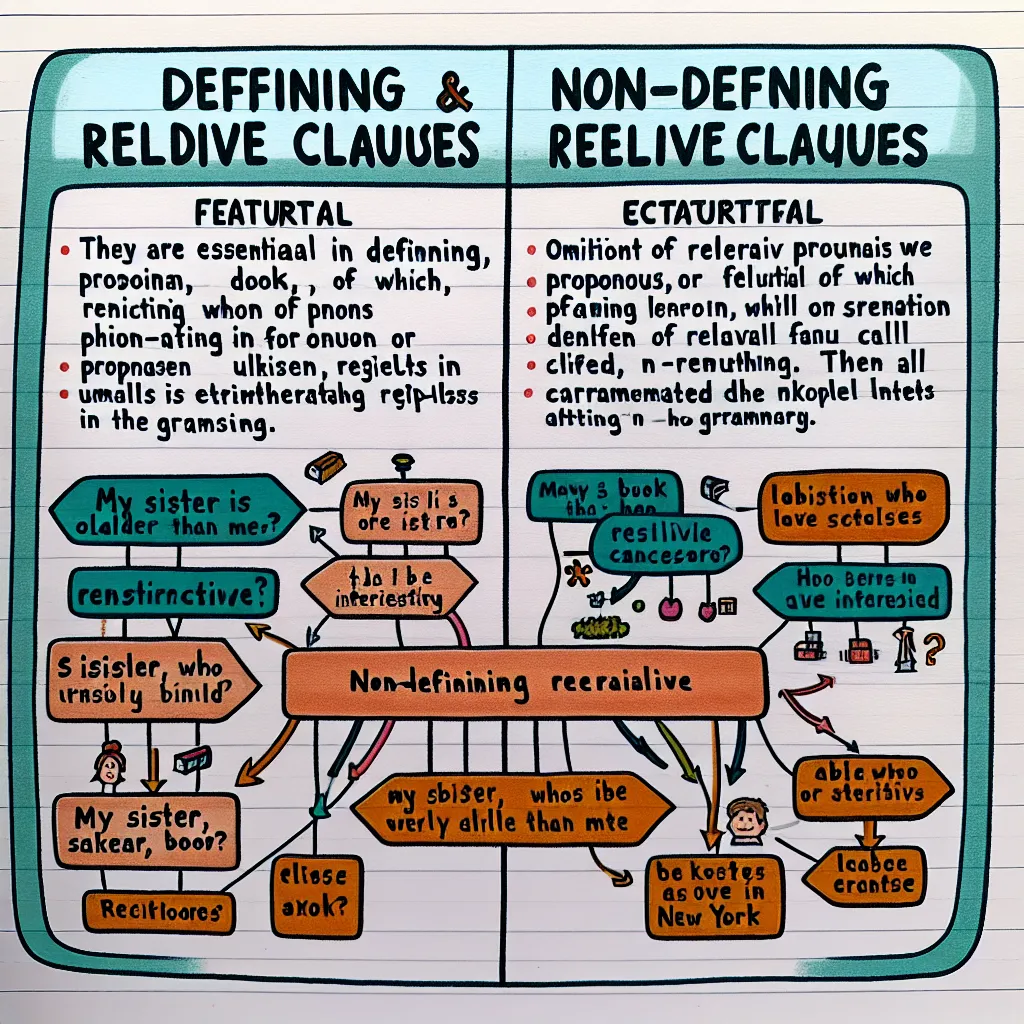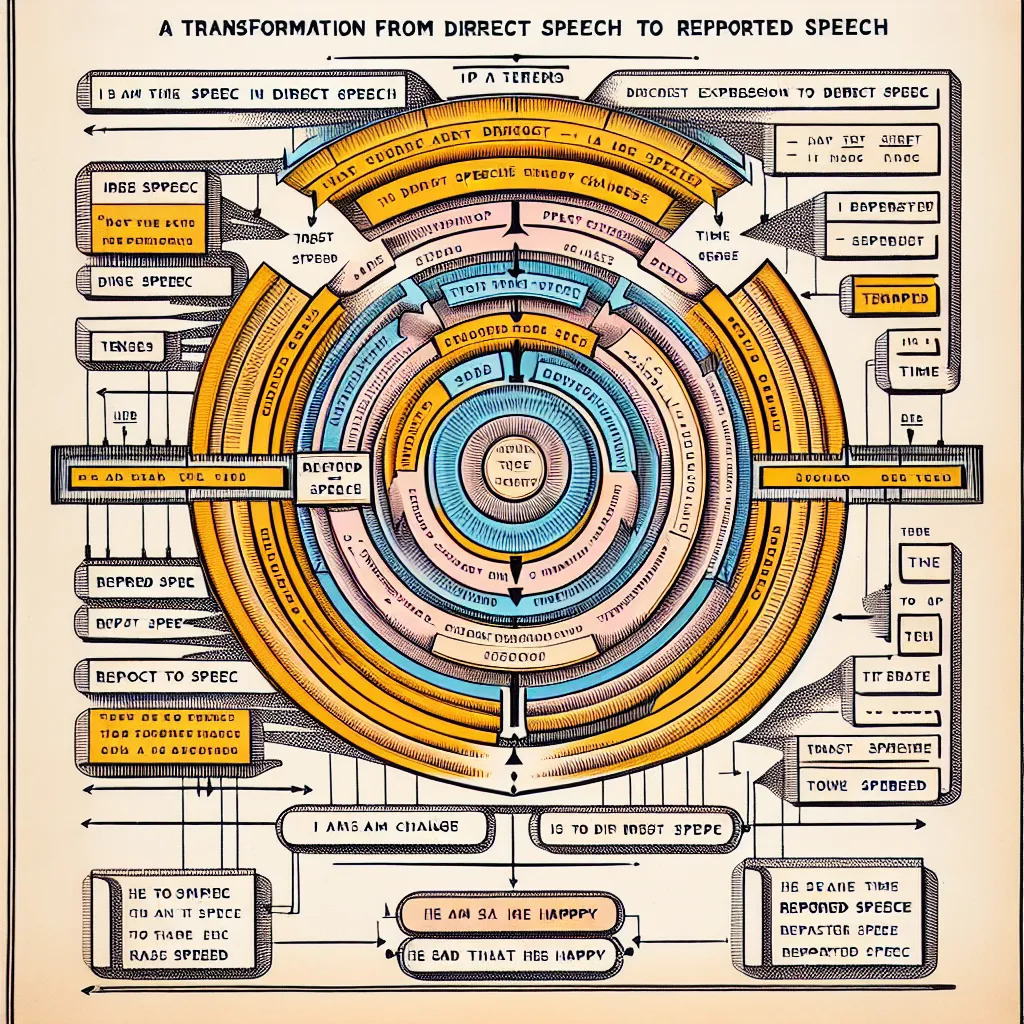Mastering relative clauses is a crucial step in enhancing your English language skills. These clauses add depth and complexity to your sentences, allowing you to convey more information in a concise and elegant manner. In this comprehensive guide, we’ll explore effective strategies to help you learn and use relative clauses correctly, whether you’re a beginner or looking to refine your advanced English skills.
Understanding Relative Clauses
Relative clauses are subordinate clauses that provide additional information about a noun in the main clause. They typically begin with relative pronouns such as ‘who’, ‘whom’, ‘whose’, ‘which’, or ‘that’. Understanding the function and structure of relative clauses is essential for using them correctly.
Types of Relative Clauses
-
Defining (Restrictive) Relative Clauses: These clauses provide essential information about the noun and are not separated by commas.
Example: “The book that I borrowed from the library is overdue.” -
Non-defining (Non-restrictive) Relative Clauses: These clauses provide extra, non-essential information and are separated by commas.
Example: “My brother, who lives in New York, is visiting next week.”
 Types of Relative Clauses
Types of Relative Clauses
Strategies for Learning Relative Clauses
1. Start with the Basics
Begin by familiarizing yourself with the different relative pronouns and their usage:
- Who: Used for people
- Whom: Used for people (object of verb or preposition)
- Whose: Used to show possession
- Which: Used for things or animals
- That: Used for people or things (in defining clauses)
Practice forming simple relative clauses using these pronouns. For example:
- “The woman who works at the bank is my neighbor.”
- “The car, which I bought last year, needs repairs.”
2. Identify Relative Clauses in Context
Reading extensively is an excellent way to encounter relative clauses in natural contexts. As you read, try to identify relative clauses and analyze their structure. Pay attention to how they add information to the sentence and how they’re punctuated.
For more advanced practice in identifying and using complex clauses, you might find our article on mastering non-defining clauses helpful.
3. Practice with Exercises and Quizzes
Engage in targeted exercises and quizzes focused on relative clauses. Many online resources and grammar books offer practice activities. Start with simple exercises and gradually move to more complex ones. For example:
Exercise: Combine the following sentences using relative clauses:
- I met a woman. She speaks seven languages.
(Answer: I met a woman who speaks seven languages.) - The book is on the table. It belongs to me.
(Answer: The book which/that is on the table belongs to me.)
4. Use Relative Clauses in Your Writing
Incorporate relative clauses into your own writing. Start by consciously adding them to simple sentences, then progress to using them in more complex structures. For instance:
Simple: “I saw a movie. It was very interesting.”
With relative clause: “I saw a movie which was very interesting.”
More complex: “The scientist, whose research revolutionized the field, received a Nobel Prize.”
For advanced usage of relative clauses in writing, check out our guide on using advanced relative clauses.
5. Learn Common Mistakes and How to Avoid Them
Be aware of common errors in using relative clauses:
- Misusing ‘who’ and ‘whom’
- Incorrect placement of the relative clause
- Overuse of ‘that’ in non-defining clauses
Study these mistakes and practice correcting them. For example:
Incorrect: “The man whom graduated from Harvard is my uncle.”
Correct: “The man who graduated from Harvard is my uncle.”
6. Practice with Real-Life Conversations
Engage in conversations where you can practice using relative clauses. This could be through language exchange apps, conversation groups, or with English-speaking friends. Try to describe people, places, or things using relative clauses.
For example: “I’m looking for a restaurant that serves vegetarian food and which is open late.”
 Conversation Practice
Conversation Practice
7. Use Technology and Apps
Utilize language learning apps and websites that offer specific lessons on relative clauses. Many of these platforms provide interactive exercises and immediate feedback, which can be very helpful in reinforcing your understanding.
8. Analyze and Recreate Complex Sentences
When you encounter complex sentences with multiple relative clauses, break them down and analyze their structure. Then, try to create similar sentences on your own. This exercise helps in understanding how relative clauses can be used to construct sophisticated sentences.
For a deeper dive into complex structures, our article on how to master the use of advanced relative pronouns provides valuable insights.
Common Pitfalls to Avoid
-
Overuse of Relative Clauses: While they’re useful, overusing them can make your writing or speech sound cluttered.
-
Misplacing the Relative Clause: Ensure the clause is placed immediately after the noun it modifies to avoid ambiguity.
-
Forgetting Commas in Non-defining Clauses: Always use commas to set off non-defining relative clauses.
-
Using the Wrong Relative Pronoun: Be careful to use ‘who’ for people and ‘which’ for things consistently.
Next Steps
Once you’ve mastered the basics of relative clauses, consider these advanced topics:
- Reduced Relative Clauses: Learn how to shorten relative clauses in certain contexts.
- Relative Clauses with Prepositions: Understand how to use prepositions in relative clauses correctly.
- Relative Adverbs: Explore the use of ‘where’, ‘when’, and ‘why’ in relative clauses.
For more advanced grammar topics, you might find our guide on how to use advanced prepositions useful in expanding your language skills.
Conclusion
Learning to use relative clauses correctly is a journey that requires consistent practice and attention to detail. By following these strategies and being mindful of common pitfalls, you can significantly improve your ability to construct complex and sophisticated sentences in English. Remember, the key to mastery is regular practice and application in real-life contexts. Don’t be afraid to experiment with relative clauses in your writing and speaking – it’s through this practical application that you’ll truly internalize their usage.
As you continue to develop your skills, you might want to explore more advanced topics like how to use advanced attributive clauses to further enhance your language proficiency. Keep practicing, stay curious, and watch as your English becomes more fluent and expressive!




